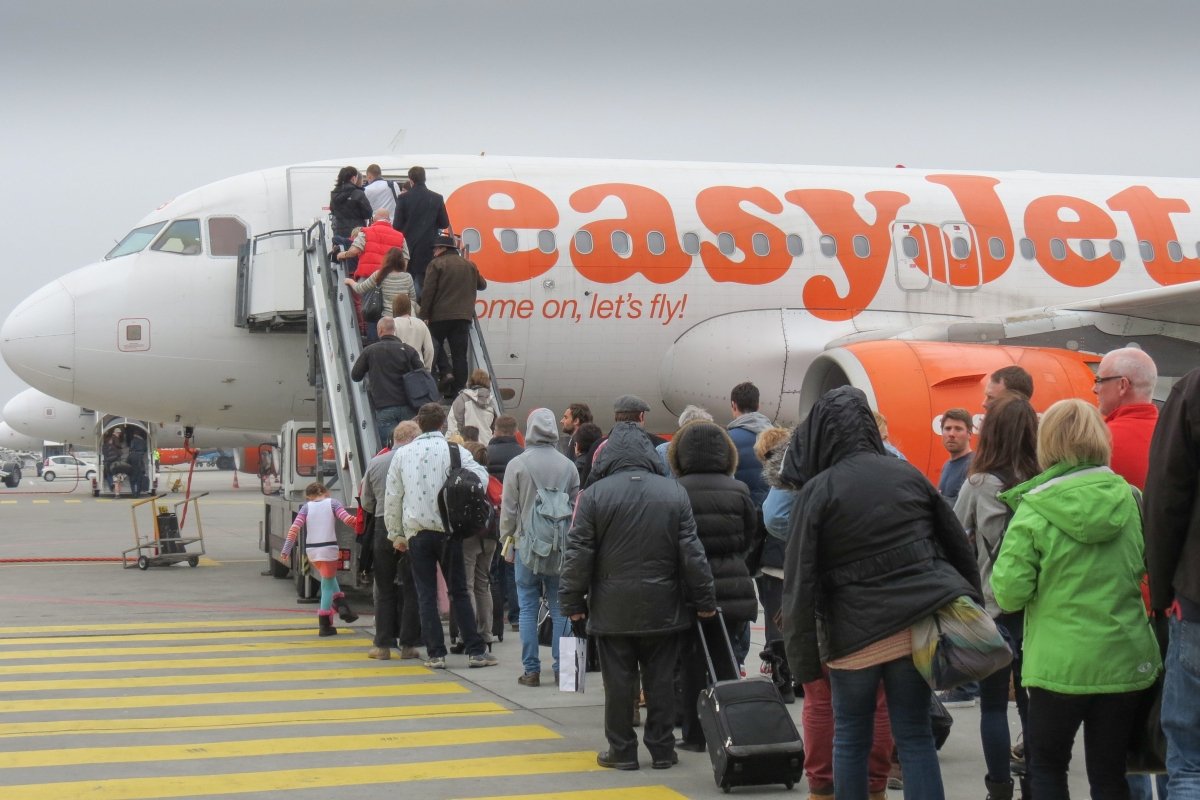Big losses announced at easyJet
easyJet lost more than £0.5 billion in the last six months
We got a trading update today from easyJet. Unusually, their financial year ends in September, so today’s announcement of their first half results covers the period from October to March. For that period, they guided to a pre-tax loss of between £535m and £565m.
That’s a much bigger loss than we saw from Ryanair, who gave updated guidance last week. Although their Irish rival has only given guidance for post-tax losses, on a pre-tax basis those are equivalent to sterling losses of closer to £300m for the same period.
We haven’t yet got March quarter figures for Wizz, but in the December quarter, pre-tax losses for Wizz slightly exceeded those of easyJet, despite Wizz being a much smaller company. I’ve included some broker estimates for Wizz’s March quarter to produce the following chart, which shows the rolling 12 month pre-tax profit margin for the three airlines. Despite being consistently the worst performer during the crisis, easyJet now looks to have caught up with Wizz margins on a rolling 12 month basis, having beaten them in both of the last two quarters.
Source: Company reports, broker estimates, GridPoint analysis
The turnaround in performance for easyJet, both in absolute and in relative terms, is heavily linked to the lifting of travel restrictions and testing requirements by the UK. Of the three airlines, they are by far the most dependent on the UK market, which generally had more draconian restrictions in place than the rest of Europe. In their latest trading statement, easyJet showed how badly this had impacted them:
“Since the announcement to remove UK travel restrictions on 24 January, we have seen a strong and sustained recovery resulting in the proportion of bookings between the UK and EU now being broadly equal, which is where we would expect it to be based on our capacity allocation, compared to last year when the split reached around 70:30 EU vs UK with the strictest restrictions in place within the UK.”
Monthly traffic statistics
We also got new traffic statistics from easyJet today, which enables us to look at the monthly trends. Whilst both Ryanair and Wizz are still ahead of easyJet in terms of recovering pre-pandemic passenger volumes, over the last couple of months easyJet has been steadily closing the gap.
Source: Company reports, GridPoint analysis
All the carriers have been actively managing capacity in response to demand levels. When it comes to seat factors, they’ve traded places on performance from month to month, but all three are now getting back to more respectable load factors in the 80-90% range.
Source: Company reports, GridPoint analysis
2021 losses in context
Whilst I’ve focused so far on the relative performance between the big three independent low-cost carriers in Europe, each of the big three network airline groups also has a low-cost arm. We don’t get the same level of disclosure for these, but we do have the annual figures for 2021. To normalise for size, I’ve shown both the operating and pre-tax losses on a per aircraft basis, at least where we have the data. This confirms Ryanair as the standout best performer of the wider group, although Air France - KLM Group’s Transavia wasn’t too far behind.
Wizz comes out particularly badly when you look at the losses after financing costs. Whilst they have plenty of cash relative to their size, their debt levels are quite a bit higher than at Ryanair and easyJet. Unfortunately, the most recent cash and debt data I have for them is from September, so I’ve shown the comparison on that date. Since then, Ryanair’s net debt has remained virtually unchanged, whilst easyJet has improved their position, cutting net debt by £300m as forward bookings started coming back strongly.
The future
A review of published results inevitably tends to focus on past performance. When it comes to the future, things are looking brighter, at least when it comes to the demand side of the equation.
Reports from all airlines confirm the strength of demand for Easter and the summer season. For example, we got the following in today’s update from easyJet:
“Since the announcement to remove UK travel restrictions on 24 January, we have seen a strong and sustained recovery in trading. Summer bookings for the last six weeks have tracked ahead of the same period in FY19 as customers book closer to departure“
Rising fuel costs and other inflationary pressures are a bigger worry. But as planes fill up, revenue management systems are starting to work again and airlines are driving up yields to offset the rise in fuel and other costs.
The biggest challenge at the moment seems to be a shortage of crew and ground staff at airports, brought on by the difficulties of scaling up operations again after such a long period of hibernation for the industry. Whilst COVID no longer seems to be depressing demand in Europe, it is still impacting on sickness levels and causing staff shortages, leading to cancelled flights and disrupted passengers.
Whilst supply shortages are less damaging to airline finances than collapsing demand, how the airlines and their suppliers handle the summer season from an operational perspective will be a big driver of relative performance. So far, things have not started well on that front for easyJet and I’m sure their management team will be scrambling to make sure that their recovery isn’t blown off course by operational problems and angry passengers.






